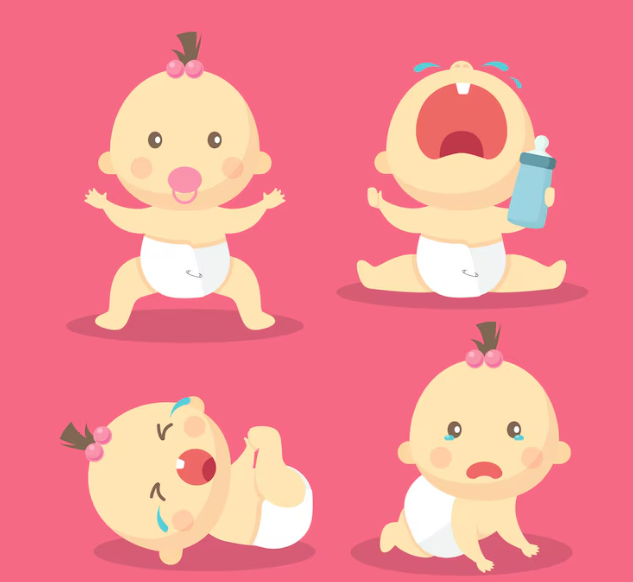Understanding Shaken Baby Syndrome (Abusive Head Trauma)

©Freepik
Shaken baby syndrome (SBS), also known as abusive head trauma, is a serious and potentially fatal form of child abuse that occurs when an infant or young child is violently shaken. This action causes the brain to move back and forth inside the skull, resulting in injury and damage. This article delves into the causes, symptoms, diagnosis, and, most importantly, prevention of SBS.
Infant Brain Injury and Shaking
A baby’s head is large and heavy compared to its body. The neck muscles are weak, unable to fully support the head’s weight. When shaken violently, the brain bounces back and forth inside the skull. This forceful movement can cause:

Bleeding: Torn blood vessels lead to bleeding within the brain (intracranial hemorrhage) or between the brain and the skull (subdural hematoma).
Swelling: Bleeding and trauma cause brain swelling, increasing pressure within the skull.
Bruising: Shaking can bruise the brain tissue (contusions).
These injuries can be fatal or lead to permanent disabilities.
Symptoms to Watch for
Symptoms of SBS may not be immediately apparent and can worsen over time. Here are some signs to be aware of:
- Changes in alertness: Unusual drowsiness, irritability, or a lack of responsiveness.
- Seizures or convulsions.
- Vomiting.
- Poor feeding or difficulty sucking.
- Loss of balance or coordination.
- Trouble breathing.
- Changes in eye movement or pupils that don’t react to light.
- Bleeding in the eyes.
- A bulging fontanelle (soft spot on the head).
Causes of Shaken Baby Syndrome
The primary cause of Shaken Baby Syndrome (SBS) is shaking a baby or young child forcefully and violently. This action causes the baby’s brain to move back and forth inside the skull, resulting in severe injury.
Here are some common triggers:
Crying: Inconsolable crying is a frequent stressor for caregivers, but shaking is never the answer.
Feeding difficulties: Frustration with feeding issues can lead to shaking.
Rough handling: Mishandling a baby, such as tossing them in the air, can cause injuries similar to SBS.

The Tragic Impact of SBS Injuries
Shaken baby syndrome can have a devastating impact on a child’s life. Potential injuries include:
Brain damage: This can lead to intellectual disabilities, learning problems, vision or hearing loss, speech and language difficulties, and behavioral issues.
Cerebral palsy: This condition affects movement, muscle tone, and coordination.
Seizures: These can be debilitating and require ongoing medical management.
Vision problems: Blindness or partial vision loss can occur.
Developmental delays: Children with SBS may miss developmental milestones in areas like movement, speech, and social skills.

Treatment Options
There is no cure for SBS, but early intervention and treatment can minimize the damage. Treatment may involve:
Medication: Medications can help control seizures, reduce swelling, and manage pain.
Surgery: In some cases, surgery may be necessary to remove blood clots or address brain swelling.
Rehabilitation: Physical, occupational, and speech therapy can help a child regain skills and functions lost due to brain injury.
Special education services: Children with learning disabilities may benefit from specialized educational programs.
Diagnosis of Shaken Baby Syndrome
Diagnosing SBS can be challenging because there’s often no external sign of injury. Doctors rely on a combination of factors, including a detailed medical history, a physical examination, and imaging tests like:
- CT scan: This provides detailed images of the brain and skull.
- MRI scan: An MRI scan can reveal bleeding and swelling within the brain.
- Eye exams: These can detect bleeding in the back of the eye, a sign of SBS.

Preventing Shaken Baby Syndrome: Every Cry Matters
The best way to deal with SBS is to prevent it from happening in the first place. Here are some tips for caregivers:
Learn about calming techniques: There are many safe and effective ways to soothe a crying baby, such as rocking, singing, and offering a pacifier.
Seek help when frustrated: If you feel overwhelmed by a crying baby, put the baby down in a safe place and take a break. Reach out to your partner, a trusted friend, or a crisis hotline.
Take a parenting class: These classes can equip you with valuable skills for managing stress and caring for your baby.
Raise awareness: Talk to other parents and caregivers about SBS and the importance of never shaking a baby.
Remember, every cry is a communication. There is always a reason a baby cries, and learning to understand those reasons is key to preventing frustration and resorting to harmful actions.
You may also like: Baby Head Shapes: Causes and Concerns
Disclaimer: The information provided on this website is for general informational purposes only and is not intended as a substitute for professional advice, diagnosis, or treatment. Always seek the advice of your physician or other qualified health provider with any questions you may have regarding a medical condition.



